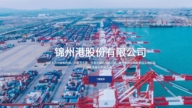【新唐人2013年06月24日訊】6月以來,大陸金融業爆發了歷年來最嚴重的「錢荒」,各大銀行因為流動資金出現嚴重短缺,不得不互相借錢,銀行間拆借利率飆升到歷史新高,但資金依然有價無市。地方政府債臺高壘,償還無期。而今年,世界媒體紛紛聚集中國金融市場,國內外金融、理財專家、經濟學家、財經作家相繼論斷「中國金融危機正在全面爆發」。
6月23號上午,上海、北京、武漢等多個地方的工商銀行系統櫃面取款、ATM、網銀等都被告知出現故障,無法取錢,雖然官方聲稱是電腦系統升級原因造成的,但網民多數質疑中國大陸銀行已經「無錢可取」,金融危機的特徵之一——銀行擠兌正在發生。
中國《南都網》報導,6月20號,大陸銀行之間競相借錢,一天的利率,最高竟然達到30%(按年折算),但依然有大量銀行籌集不到資金甚至違約。人們不禁疑問,銀行怎麼會出現「錢荒」?錢都到哪裏去了?
專家解析,銀行裡面的錢都被「借」出去了﹗地方債務、企業債務,加上資金外逃,掏空了銀行的資產,導致銀行間的現金周轉出現了巨大的問題。
北京天則經濟研究所副所長馮興元:「現在很多錢都到所謂影子銀行,影子銀行錢到哪裏去了﹖就是大量的跟地方政府負債連在一起。中國的地方政府尤其是投融資平臺公司負債是非常大的﹔ 現在企業效率大大下降,沿海地區製造業危機,企業效益不好,有時候資金鏈比較緊張,它反而需要很多錢, 那麼還有一部分是大量的資金外逃。」
中國大陸的地方債務究竟有多少?據審計署6月10號發佈的地方政府債務,約有3萬8千500億元。
但據官方媒體報導,兩會期間,審計署副署長董大勝估計,各級政府總債務規模在15萬億到18萬億。
如此高的債務,加上大陸近年來以GDP為地方官員的工作成績指標,地方官員大量建造辦公大樓等公共工程為GDP灌水,造成許多超建與地方政府赤字,更是加深了地方債務危機。
大陸企業觀察人士何軍樵:「我們看到各級地方債務問題已經浮出冰山了,現在很多人都已經知道了,前兩年只有極少數研究經濟的人才知道,這兩年隨著媒體各個方面已經透露出來了,中國地方政府的債務問題已經是非常非常嚴重,各級地方政府要做基礎建設已經沒有錢了。」
據了解,各級地方政府主導註冊了大量的投資公司。因為是政府背景的公司,所以銀行通常是「借」多少,就給多少。而當局經常從銀行拿錢,造成銀行的爛帳和金融呆帳嚴重。
馮興元 :「有很多地方融資平臺公司,他們是借了新的,再去還舊債。等於重新繼續延貸款的,甚至不付利息,轉成貸款。銀行資產質量就急劇惡化,這裡邊很大一部分相當於違約,就是地方政府還不了債了。 很多地方政府都出現這個問題。」
金融專家們指出:不僅僅百姓存到銀行裡面的錢難以負擔地方政府巨大的債務,即使是現印鈔票都難以填補巨大的漏洞。而且,恰逢2013和2014年,中國大陸有近一半的地方債務集中到期,所以出現了金融業,特別是銀行史上,最嚴重的「錢荒」。
馮興元:「那麼現在風險就慢慢體現,風險越來越大,因為還債高峰期已經到了 如果地方政府違約的話,施工隊首先遭殃,錢要不回來。銀行也要遭殃,實際上風險非常大,很可能是壞賬。」
馮興元說,目前中國財政上的危機很可能擴散到金融鏈。與此同時,中共體制對於危機的處理往往是通過降低透明度來維持,因此危機已經出現了,就是不說。
專家們普遍認為,從目前中國國內的金融狀況看,大陸已經爆發金融危機,只是民眾還不知情。
採訪編輯/張天宇 後製/ 蕭宇
China Confronts Full – Blown Financial Crisis
Since June, the most serious “money shortage ever"
has shaken China’s finance industry.
Banks have to borrow money from each other to
deal with a serious cash shortage.
Across China, local Chinese Communist Party authorities
are facing huge debts, but are failing to pay them off.
Financial experts, professionals, and economists
have commented that,
“China is now facing a full-blown financial crisis.”
On June 23, in many of China’s cities,
including Shanghai, Beijing and Wuhan,
there are failures in withdrawing money from
local Industrial & Commercial Bank (ICBC) agencies.
The ICBC has alleged that it was due to
a problem in computer system upgrading.
Netizens, however, suspect that China’s banking
industry is facing a “shortage of money”.
China is staging bank runs, which are characteristic of
a financial crisis.
Nandu.com reported that on June 20,
cash loan rates increased among banks in China.
The highest daily loan rate has reached 30%.
However, lots of banks still failed to
raise enough money.
The public is asking how there could be a cash shortage?
Where has the money from all these banks gone?
Experts say that bank money has all been used in “loans”.
China’s banks have been emptied by local fiscal debts,
enterprise debts, and money transferred overseas.
Thus it has led to a cash flow shortage in China’s banks,
according to expert observers.
(Deputy Director, Unirule Institute of Economics)
Feng Xingyuan: “Currently in China, shadow banks
have actually garnered a large amount of money.
But where has the shadow banks’ money gone?
This is massively related to local government debts.
Local governments-sponsored investment and
financing companies, have owned whopping liabilities.
Business performance has dramatically dropped and,
coastal regions are experiencing manufacturing crises.
Sometimes, enterprises have tight cash flows,
they are in need of more money.
Another reason is that hefty amounts of money have
been transferred, or carried out of China. ”
How much is China’s local government debt?
The figure is 3.85 trillion yuan, according to
the latest official figures, released on June 10.
China’s official media quoted Dong Dasheng,
deputy director of the National Audit Office.
Dong has estimated that China’s current local fiscal debt
is between 15-18 trillion yuan.
Furthermore, local CCP authorities have boosted GDP by
starting a large number of construction projects in recent years.
These include office building and other public works.
Excessive construction has deepened the local fiscal crisis.
(Senior business consultant) He Junqiao: “The issue of
local fiscal debts has been exposed by media in recent years.
Back a few years ago, only a
few economic professionals were aware of this.
Local government debt is very serious now,
no money is available for infrastructure.”
Local governments have set up plenty of
investment companies.
Banks would offer loans to these government-sponsored
companies, with up to as much as they applied for.
This situation has caused a build-up of serious
bad debts within banks.
Feng Xingyuan: “Now a lot of local government-sponsored
financing companies pay off old debts with new loans.
This has sharply deteriorated bank assets.
A large part of these loans is derived from debt default.
That is, local governments can’t pay off debts,
this is also a common problem in other regions.”
Financial experts have indicated that ordinary citizens’
bank deposits cannot bear the huge local fiscal debt.
Whilst printing money
cannot help cover the loophole, either.
Nearly half of local fiscal debts
have become due in 2013 and continue into 2014.
So there is the present “money shortage”,
the most serious ever in China’s financial history.
Feng Xingyuan: “Now the risk is gradually unfolding.
This risk is actually growing day by day,
as a debt repayment peak has arrived.
If local governments default, the first casualty
will be construction corporations.
Banks will be the next to be affected,
they will face bad debts, probably.”
Feng Xingyuan adds that China’s fiscal crisis is likely to
spread throughout the financial system.
Whilst it is known that CCP authorities always have
reduced transparency in dealing with crises.
In other words, a crisis has emerged,
but CCP authorities have not yet made it public.
Experts generally agree that a financial crisis has
broken ground in China.
All the while, mainland Chinese have not yet
been made aware of this fact.





























